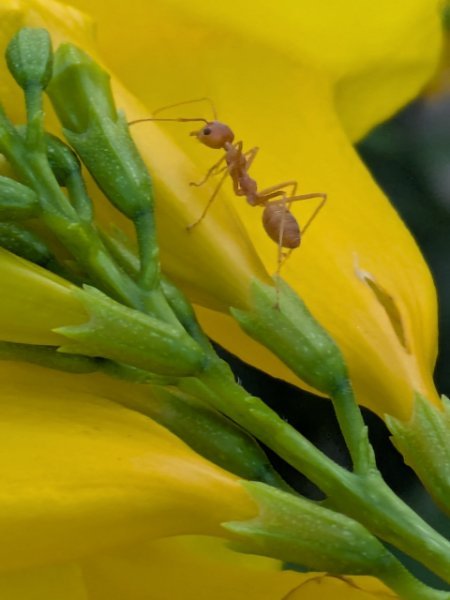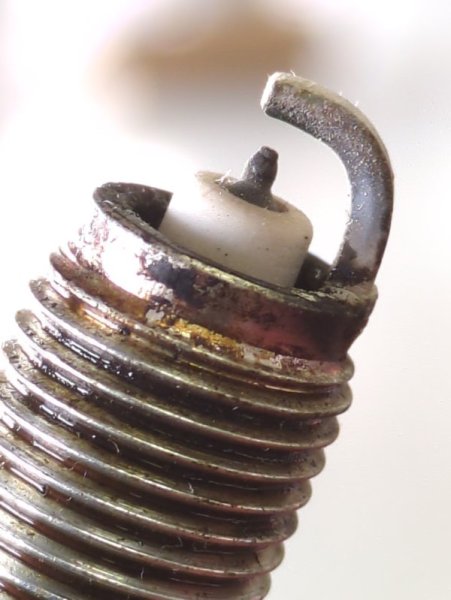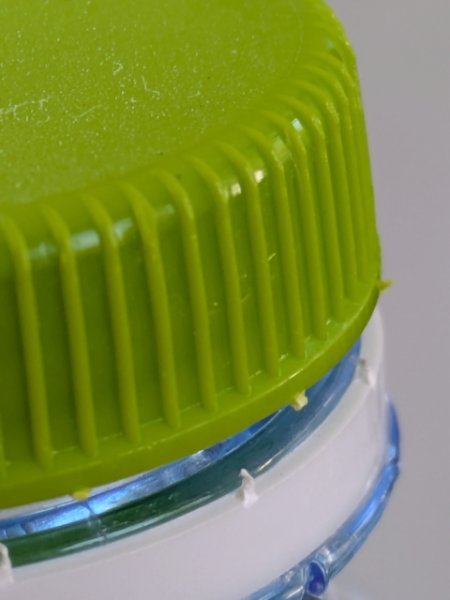
IsaanT
Member-
Posts
311 -
Joined
-
Last visited
Content Type
Events
Forums
Downloads
Quizzes
Gallery
Blogs
Everything posted by IsaanT
-
I used to work for the UK's largest tyre distributor. You say that you have been told that the tyres are 'more than' five years old. I'd be interested in knowing their age. Tyre age can be determined by the DOT (US Department of Transport) code printed on the side of the tyres. This states the month and year of manufacture. How the DOT Code Works: The last four digits of the DOT code represent the week and year the tyre was manufactured. Here's how to decode it: The first two digits represent the week of the year (from 01 to 52). The last two digits represent the year the tyre was manufactured. For example, if the last four digits of the DOT code are 2518, it means the tyre was manufactured in the 25th week of 2018. Example of a DOT Code: DOT B3YZ ABCD 2518 2518 means the tyre was made in week 25 of the year 2018. There is no set age at which tyres should be replaced. Most get replaced when insufficent tread remains but that isn't the case for you. Typically, tyres of more than eight years are probably best replaced due to ageing of the rubber compounds but it depends on how the vehicle has been used, stored, etc. Ultra violet light in Thailand is likely to degrade the sidewalls faster due to its strength here. As has already been pointed out, this is visible by small cracks forming. Blisters, cuts or any other abnormal indications would be compelling reasons for replacement in older tyres. So, how old are your tyres?
-
Thailand May Ease Overseas Income Tax Rules Amid Global Changes
IsaanT replied to webfact's topic in Thailand News
I was describing the FIFO principle. The answer to your question - how to prove the origin of savings - is to print a bank statement showing the balance of your savings as at 31st December 2023. Any savings up to this point are not assessable for tax purposes. Savings beyond this point, i.e. January 2024 onwards, are. The FIFO principle is then applied to the amount as at 31st December 2023. In case others may have missed it, here is a simple worked example of FIFO in action: Balance as at 31st December 2023 - $20,000 Remittances to Thailand in 2024 - $10,000 Additions to savings in 2024 - $15,000 Closing balance as at 31/12/2024 - $25,000 Using FIFO, $20,000 - $10,000 = $10,000, so the remaining non-assessable savings are $10,000. The additional $15,000 added to the account in 2024 is after the 2023 deadline so would be assessable for tax purposes if remitted to Thailand (the Thai tax is based on the principle of remittance-based taxation, i.e. you may pay tax if you bring the money in to Thailand. Obviously, if it's left in your home country savings account, it is unaffected.). Assuming that 2025 is a repeat of 2024 and a further $10,000 is remitted to Thailand and a further $15,000 is added (e.g. pension): the remaining $10,000 non-assessable funds would have been used up so the account would have no further non-assessable funds. The $30,000 balance at the end of the year would be assessable in subsequent tax years if remitted to Thailand. I hope this helps. -
FYI for UK expats: It was helpful of @Moonlover to bring this to the forum's attention. However, with respect, I can improve on this. The official Thailand-UK Double Taxation Convention can be viewed at https://www.gov.uk/government/publications/thailand-tax-treaties. A number of double taxation agreements are currently being reviewed, and this web page allows you to be notified of any changes in the content by email. The current information is effective in Thailand from 1st January 1981 and was published on the .gov.uk website on 2nd January 2014. I already use this .gov.uk email notification service for another UK legislation topic and find it reliable.
-
Thailand May Ease Overseas Income Tax Rules Amid Global Changes
IsaanT replied to webfact's topic in Thailand News
I've presented the facts. This forum wouldn't survive for very long if every statement (I exclude opinions) had to be verified. Some of us are trying to provide helpful input. If you seek ultimate veracity, please do your own homework. -
Thailand May Ease Overseas Income Tax Rules Amid Global Changes
IsaanT replied to webfact's topic in Thailand News
I'm talking about bringing money into Thailand, so I am talking about the Thai Revenue Department. -
Better Sleep: How to Improve Sleep Quality and Feel More Rested
IsaanT replied to CharlieH's topic in The Wellness Zone
I bought a Dunlopillo latex mattress here one year ago. It even had a Union Jack on it. -
Better Sleep: How to Improve Sleep Quality and Feel More Rested
IsaanT replied to CharlieH's topic in The Wellness Zone
I agree - I have an alarm on my watch to remind me to eat a banana at 9pm every night. I follow most of the other advice and am usually asleep in 1-2 minutes. -
Thailand May Ease Overseas Income Tax Rules Amid Global Changes
IsaanT replied to webfact's topic in Thailand News
My point was that expats are guests in Thailand. Thais may choose to flout their own rules, as nationals do in many countries. Expats are not nationals. Nationals are exempt from domestic visa issues, for example. -
Thailand May Ease Overseas Income Tax Rules Amid Global Changes
IsaanT replied to webfact's topic in Thailand News
Why would you intentionally wish to flout the rules in your host country? -
Thailand May Ease Overseas Income Tax Rules Amid Global Changes
IsaanT replied to webfact's topic in Thailand News
The process is simple and works on the FIFO (First In, First Out) principle. For example, if you had £20,000 in your savings account on 31 December 2023 and remitted £10,000 from it to Thailand in 2024, you would have £10,000 of your original 2023 funds left. Even if you added £5,000 to your savings in 2024, e.g. pension, accrued interest, etc., giving you a year-end balance of £15,000 at 31 December 2024, you still only have £10,000 of your original non-assessable 2023 savings. -
You are absolutely right but I'm unclear what point you are making. Dick Van Dyke wasn't exactly Nureyev, was he?
-
Side? On back. Problem solved.
-
If my arithmetic is correct, he would have been 42 when he filmed this. Whilst commendable, this isn't exceptional for a fit 42-year old.
-
Inspired by all this photography mullarkey, I just wandered into the garden to see if I could find anyting of interest. This was taken on 8x zoom again, and I was at the closest focus (I was literally pulling the phone back and forth until the focus looked right). It's not perfect but it's representative of what is possible.
-
Great film. They actually flew the plane in the film that they constructed but sadly the professional pilot was killed because it didn't do landings very well. The pilot was Paul Mantz. The story goes that while performing a low-level take-off (aren't all take-offs low-level?) in the Arizona desert, the aircraft struck a small sand dune, breaking apart on impact. The impact was fatal for Paul Mantz. His co-pilot , Bobby Rose, survived but suffered serious injuries. Frank Tallman, Mantz's longtime business partner, completed the remaining flying sequences for the film.
-
Indeed I am. Slightly off topic but I also had a nice 35mm film camera once (I still have it in a box somewhere). It was a Pentax MX. At the time the Pentax ME Super was very popular but I wanted a fully-manual camera. It had a good light meter with half-stop over/under lights and full-stop over/under lights. Naturally, one twizzled the aperture and shutter speeds until the green aperture light lit. This was about 45 years ago and I remember at the time being very aware that the cost of film and developing meant that each shot cost me about 40p. It made me very selective about pressing the shutter. This was great training for composition, focus, light, subject matter, etc., etc., because nobody wants to see duds when they come back from the developers. So, I don't take snaps - I take photos. I'm British, and we used to have a great fashion photographer called Norman Parkinson (1913-1990). He would sometimes be commissioned to do royal portraits, for which he used a plate camera. I remember in an interview he stated that he took two plates to each assignment, just in case something went wrong with the first one. That's the way to do it. p.s. If you're interested (and you obviously are), have a look at NP's archive at https://www.normanparkinson.com/ Very inspiring.
-
I should point out that my shots are all hand-held - no tripod used. The shutter speed on the most recent one was 1/100th of a second. Here's a photo I took last year when I really wanted to get close in on the detail, which I think is a good representation of what is possible with a standard phone camera. I do like the really narrow depth of field that is possible. Regarding tripods, I seem to recall I was holding the spark plug in one hand, the phone in the other, and had to use the self-timer because I'd run out of hands. Apologies that the subject matter isn't more interesting - no convenient spiders here at this time...
-
Transport Ministry Eyes Major Roi Et Airport Upgrade
IsaanT replied to webfact's topic in Isaan News
Broadly correct but, strictly speaking, it's six flights because three come in (scheduled times 08:25, 13:15, 19:20) and each one departs half an hour later (08:55, 13:45. 19:50). So, with approximately five hours between each in-and-out flight, they appear to have plenty of time in the day to accommodate other traffic if needed. As for extending the runway, all the flights are internal flights to and from Bangkok so only use small airliners (Airbus A320's currently). These type of aircraft only need 1,500-1,800 metres under normal conditions. I'm sure they could find a better use for the money. -
Mobile phones can take close-up photos. This is a plastic cap on a 600ml water bottle, chosen as something we're all familiar with. I concur with what someone else has said that manual camera apps can give a degree of control that the standard manufacturer-supplied app doesn't (because that's not their target audience). However, for this shot indoors under artificial light I used the standard phone app (Pixel 7a, 2x zoom).











